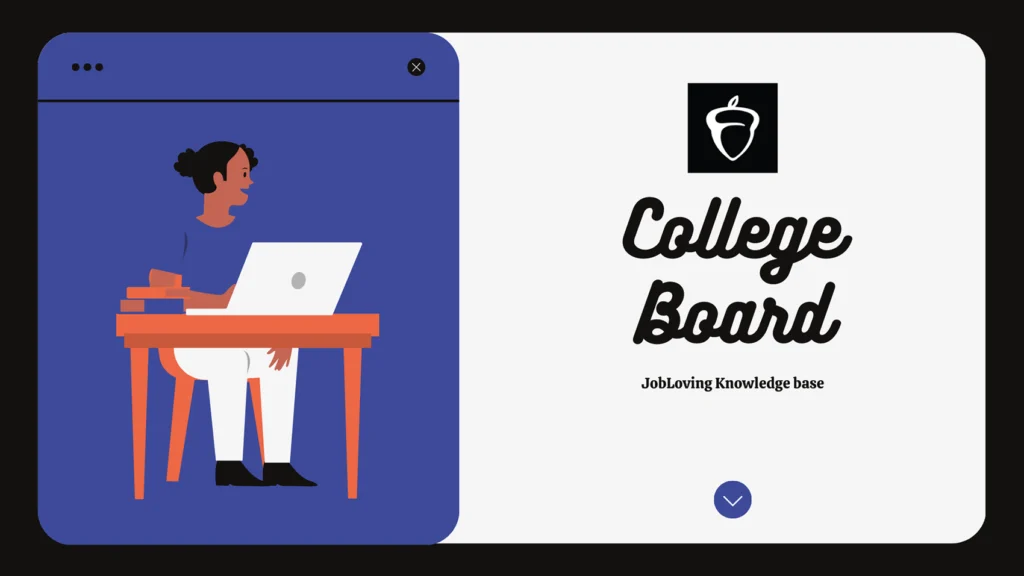Navigating the Tax Jungle: How to Put Your Returns on the College Board (and Not Lose Your Mind)
So, you’re about to embark on the thrilling adventure of college applications. Congratulations! But hold on, there’s a twist: the dreaded financial aid forms. Brace yourself, because the College Board’s Integrated Document Service (IDOC) is about to become your new best friend (or maybe your worst enemy, depending on how you feel about paperwork).
The most common question we get is: “How do I upload my tax returns to IDOC?” It’s a fair question. The thought of wading through mountains of tax documents and wrestling with a website can be enough to make anyone want to hide under their blankets and scream “NO MORE FORMS!” But fear not, my fellow applicant! We’re here to break down the process and make this whole ordeal a little less painful.
Step One: Log In and Get Ready to Upload
The first step is to log in to the IDOC website. You’ll need your College Board account details. Once you’re in, you’ll be greeted with a form begging for your vital financial information. It’s like a digital tax interrogation, but don’t worry, you’ve got this!
The next step is the upload. The good news is that IDOC accepts a variety of formats. JPEG, TIFF, and PDF are all welcome. Think of it as a digital buffet for your tax documents.
Step Two: What Documents Do You Actually Need?
Here’s where things get a little more complicated. The College Board is like a hungry monster that demands all your financial information. They want to see your tax returns, W-2 forms, and other financial aid documents. And not just yours, but your parents’ as well. It’s like they’re trying to understand your entire family’s financial history.
The good news is that you don’t have to submit every single document ever created. They’re primarily interested in your most recent tax returns. For example, if you’re applying for the 2023-2024 school year, they’ll want your 2022 tax returns.
To make things even more fun, they want ALL the pages of your tax documents. So, if your 1040 has 10 pages, you need to upload all 10. But, and this is important, they only want the actual documents. Don’t go uploading your tax preparation software output or any other extraneous stuff. Just the pure, unadulterated tax forms.
Step Three: The Non-Tax Filer Conundrum
What if you or your parents don’t have to file taxes? Don’t panic! The College Board has a special form for you called the Non-Tax Filer Statement. This form allows you to provide documentation of any wages, even if you didn’t file taxes. It’s like a “we have no taxes, but we still need to prove we exist” form.
Step Four: Get Ready to Submit!
Once you’ve gathered all your documents and uploaded them to the IDOC website, be sure to sign your tax return. That’s right, you need to put your John Hancock on the digital versions of your tax documents. That’s how they know it’s really you and not some mysterious ghost submitting your financials.
Submit your tax return and all supporting documentation to the College Board. And remember, the College Board is a non-profit organization, so they don’t pay taxes on their revenues. But they’re still hungry for your financial information.
Bonus Tips:
- Double-check everything! Make sure you have all the right documents, and that they’re all properly filled out and signed. There’s nothing worse than having to resubmit your documents because you forgot a signature or made a mistake.
- Keep track of deadlines! The College Board has deadlines for submitting tax documents. Don’t wait until the last minute, because you’ll likely be stuck in a long line of stressed-out applicants.
- Don’t be afraid to ask for help! If you’re struggling with the IDOC website or have questions about what documents you need, don’t hesitate to reach out to the College Board for assistance. They’re there to help you navigate this process.
The College Board: A Non-Profit Organization with a Taxing Hunger
Now, you might be wondering why the College Board needs all this financial information. Well, they use it to determine your eligibility for financial aid. The more money you and your family make, the less financial aid you’ll likely receive. It’s a system designed to help students from low-income families afford college, but it can be a little confusing and stressful for everyone involved.
But remember, the College Board is a non-profit organization. They don’t pay taxes on their revenues. So, while they might be asking for a lot of your financial information, they’re not actually making a profit off of it. They’re just trying to make sure that financial aid goes to the students who need it the most.
The Bottom Line: Embrace the Tax Jungle
Submitting your tax returns to the College Board might feel like an impossible task, but it’s not as daunting as it seems. With a little bit of effort and organization, you can conquer the IDOC website and submit your documents with confidence. Remember, you’re not alone in this journey. Millions of students have gone through this process before you, and they all survived.
So, breathe, take a break (maybe grab a chocolate bar), and tackle those tax documents. You’ve got this!
If you need further help, answers, or research resources about how to put tax returns on the College Board, you can connect with us at the JobLoving community. We’re here to help you navigate the complex world of college applications and financial aid.

